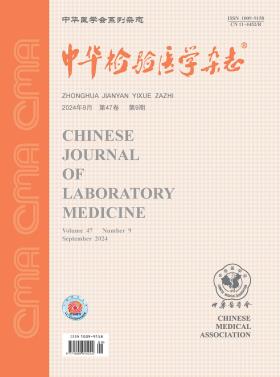Relationship between apolipoprotein E gene polymorphism and cerebral infraction in Chinese type 2 diabetes mellitus patients
Q4 Health Professions
引用次数: 0
Abstract
Objective To investigate the relationship between apolipoprotein E (APOE) gene polymorphism and cerebral infraction (CI) in Chinese type 2 diabetes mellitus (T2DM) patients. Methods This study included 245 samples of T2DM patients without cerebral infraction (CON group) (Male/Female, 128/117) and 270 samples of T2DM patients with cerebral infraction (CI group)(Male/Female, 145/125) from the department of endocrinology and neurology utilizing real-time fluorescence quantitative PCR technique. The t test and χ2 test were used to compare the differences between the two groups. Results Patients with a history of hypertension in the CI group (84.12%) were significantly higher than those in the CON group (70.42%) (χ2=15.91, P<0.05).The systolic blood pressure (142.78±20.52)mmHg of the CI group was significantly higher than that of the CON group (133.89±18.58)mmHg (t=-5.16, P<0.05).Compared with CON group, the frequency of genotypes of e2/e3 and e3/e4 in CI group was significantly higher, while the frequency of e3/e3 genotype was significantly lower (χ2=11.48, P<0.05); the allele frequency of APOE e4 was higher while e3 was lower in CI group than that in CON group (χ2=7.00, P<0.05). Logistic regression analysis showed that hypertension history (OR=1.95, P<0.05), high systolic blood pressure (OR=1.02, P<0.05), APOE genotypes of e2/e3 (OR=2.08, P<0.05) and e3/e4 (OR=1.85, P<0.05) were independent risk factors for cerebral infarction in T2DM patients. Conclusion The polymorphism of APOE gene may be related to cerebral infraction in Chinese T2DM patients. Key words: Diabetes mellitus, type 2; Diabetic angiopathies; Brain infarction; Apolipoprotein E4; Polymorphism, genetic中国2型糖尿病患者载脂蛋白E基因多态性与脑梗死的关系
目的探讨2型糖尿病(T2DM)患者载脂蛋白E (APOE)基因多态性与脑梗死(CI)的关系。方法采用实时荧光定量PCR技术对来自内分泌神经内科的245例无脑梗死T2DM患者(CON组,男/女,128/117)和270例伴有脑梗死T2DM患者(CI组,男/女,145/125)进行研究。采用t检验和χ2检验比较两组间差异。结果CI组有高血压病史的患者(84.12%)显著高于CON组(70.42%)(χ2=15.91, P<0.05)。CI组收缩压(142.78±20.52)mmHg显著高于CON组(133.89±18.58)mmHg (t=-5.16, P<0.05)。与CON组相比,CI组e2/e3、e3/e4基因型出现频率显著升高,e3/e3基因型出现频率显著降低(χ2=11.48, P<0.05);CI组APOE e4等位基因频率高于CON组,e3等位基因频率低于CON组(χ2=7.00, P<0.05)。Logistic回归分析显示,高血压病史(OR=1.95, P<0.05)、高收缩压(OR=1.02, P<0.05)、e2/e3 APOE基因型(OR=2.08, P<0.05)、e3/e4 APOE基因型(OR=1.85, P<0.05)是T2DM患者发生脑梗死的独立危险因素。结论APOE基因多态性可能与我国T2DM患者脑梗死有关。关键词:糖尿病;2型;糖尿病性血管病;脑梗死;载脂蛋白E4;多态性、遗传
本文章由计算机程序翻译,如有差异,请以英文原文为准。
求助全文
约1分钟内获得全文
求助全文
来源期刊

中华检验医学杂志
Health Professions-Medical Laboratory Technology
CiteScore
0.40
自引率
0.00%
发文量
8037
期刊介绍:
 求助内容:
求助内容: 应助结果提醒方式:
应助结果提醒方式:


